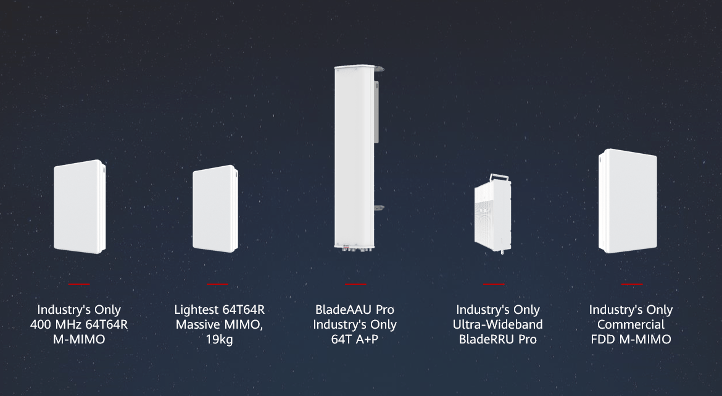News
The world is rapidly embracing 5G as not just the next generation of mobile technology but also to create new business, ecosystems, and opportunities.
The growth in the 5G ecosystem is evident from the number of global rollouts. Despite being impacted by the COVID-19 pandemic, 5G commercial rollouts accelerated in 2020 and have managed to reach 158 local operators with active networks in 67 markets worldwide as of March 2021, according to S&P Global Market Intelligence.
However, as 5G deployments scale, operators also face immense challenges in being able to deliver the promise of 5G, which is lag-free ubiquitous connectivity and flawless customer experience. Moreover, 5G is created not just to connect people but also things or devices through the Internet of Things (IoT). That requires significantly reduced per-bit costs and support for massive connectivity of IoT terminals.
Getting the most out of 5G
To meet this challenge of reducing cost per bit, a combination of high IF bandwidth and Massive MIMO (M-MIMO) is required that can help create a high-bandwidth network for building ubiquitous connectivity.
TDD high-bandwidth M-MIMO has been well recognized across the world. It can enable a minimum of a 10x improvement in user experience when compared with that of 4G at the same sites with 1.8GHz. However, algorithms play a crucial role in improving the performance of M-MIMO and, in turn, the associated commercial networks. This means the same hardware can have vastly different performance depending on the algorithms being used on top of it.
Though Massive MIMO has already been successfully commercialized on TDD bands to ensure premium experience and high capacity in 5G networks,
While TDD M-MIMO has been successful in commercial deployments, FDD Massive MIMO has been struggling because of balance device dimensions, weight, and performance. On the other hand, several telecom operators have limited to no high TDD bandwidths.
Several others also face humungous pressure to increase capacity. To solve this, Huawei recently launched the industry’s first commercial FDD Massive MIMO products by putting together ultra-miniature passive intermodulation (PIM)-free filter technology and Meta-material array design.
The innovation has led to the creation of an FDD Massive MIMO device, which is less than 500 mm in width that still has engineering specifications comparable to those of TDD Massive MIMO. The cell capacity of this device is five to six times higher than 4T4R, even though it is able to provide similar in-depth coverage performance as that of sub-1 GHz bands.

Innovations beyond M-MIMO
Huawei has also been able to build a light-weight base station, which is easy to install and takes up less space, leading to lower construction costs. The Huawei 64T64R Massive MIMO is the lightest product in the category, with a single module weighing as little as 19 kg. Owing to its slim profile, the new 64T products can be transported and installed by just one person without compromising on performance, and in fact, it significantly improves construction efficiency.
Algorithms, as we mentioned, play a vital role in enhancing the capabilities of M-MIMO. For example, it requires a great deal of engineering and advanced algorithms to create a Massive MIMO product that supports both 64T64R and 400 MHz bandwidth. Huawei managed to achieve this feat recently by launching the industry’s only 400 MHz ultra-wideband 64T64R Massive MIMO.
The product balances huge bandwidth and high capacity to allow the use of a single module to be shared by multiple operators. For operators who face spectrum insufficiencies, this greatly helps in improving user experience and significantly reduce the site power consumption of antenna modules.
In 2020, Huawei launched Blade AAU Pro, which supports 64T64R M-MIMO and Sub-3 GHz full-band. The solution came equipped with the unique "transparent" antenna technology that simplified deployment and thereby reduced costs. This year, Huawei’s BladeAAU integrates active and passive antennas into a single box, which helps to overcome scenarios with limited space, which is a common pain point among operators worldwide.
Operators in Switzerland are already using the solution to acquire new sites and rapidly deploy 5G networks. The new BladeAAU has also helped operators in China expand coverage and improve the 5G user experience owing to its higher mounting height. Huawei also unveiled its latest BladeAAU Pro, which has an active module improved with 64 channels over the previous 32 and support a 320 W transmit power and 200 MHz bandwidth. This allows extra flexibility for operators to meet higher capacity.
Huawei also unveiled BladeRRU Pro, the industry’s only RF unit supporting three low and three medium bands. The new solution aims to solve for efficient use of fragmented sub-3 GHz spectrum, which has turned out to be a major headache for global operators. A traditional RF solution aggravates the insufficient antenna space, difficult site acquisition, and high cost of deployment and maintenance because of a single band corresponding to a single module.
The BladeRRU Pro, for the first time, integrates three low bands/three medium bands, reducing the required number of FDD RRUs for full-band coverage by two thirds and making investments in multi-band deployment more efficient.
The module has already been adopted commercially in several countries. Huawei bundles the SingleCell software solution for BladeRRU Pro to coordinate scheduling between low and medium bands, enabling more resources to serve low-band UEs at cell edges. SingleCell has been shown to nearly double the average seen in experience indicators for these UEs, as per insights from the commercial use of the solution at multiple sites.
The future belongs to 5G, but it is essential to adopt the right algorithms and products to extract maximum value from your 5G deployments and offer a great user experience. To that end, Huawei products have continued to be on the frontline in pushing the boundaries of innovation in 5G.
This article was produced by Total Telecom on behalf of Huawei















